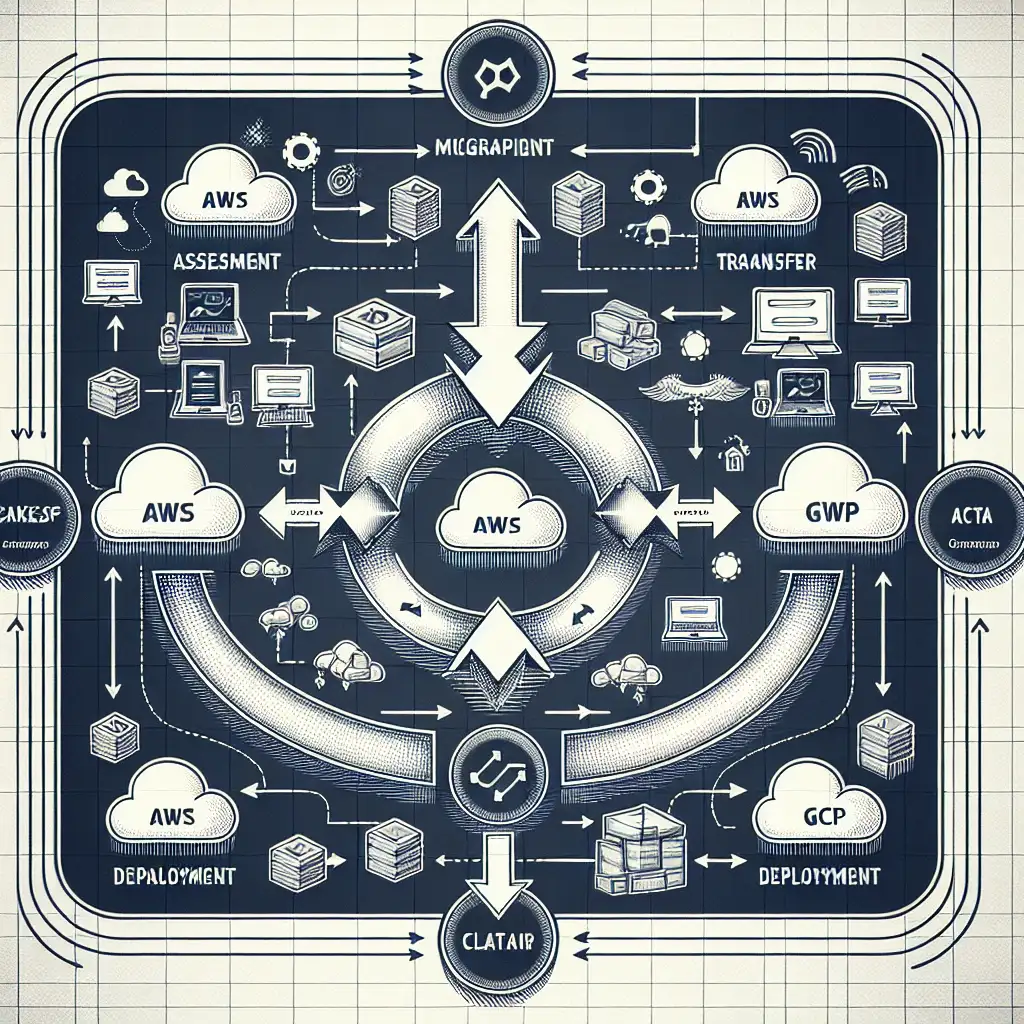A Step-by-Step Guide to Seamlessly Migrating Your Workloads from AWS to GCP
As businesses evolve, the need for cloud platforms that provide cost efficiency and cutting-edge AI/ML capabilities is becoming paramount. While AWS has been a dominant cloud provider for years, many organizations are finding compelling reasons to migrate workloads to Google Cloud Platform (GCP). With advanced machine learning tools, competitive pricing, and flexible infrastructure services, GCP opens the door to new competitive advantages.
However, migrating your workloads from AWS to GCP isn’t just a matter of flipping a switch. Without a clear migration strategy, you risk unexpected downtime, data loss, or resources not aligning with business goals. Forget one-size-fits-all migration approaches—this guide breaks down a proven, methodical process that addresses the real technical pitfalls and makes multi-cloud strategies practical rather than aspirational.
Why Migrate from AWS to GCP?
Before diving into how-to’s, let’s quickly outline why your organization might choose this path:
- Cost Optimization: GCP often provides more flexible and transparent pricing models.
- Advanced AI/ML Services: Google’s TensorFlow integration and AI APIs can accelerate innovation.
- Data Analytics Integration: BigQuery offers powerful serverless data warehousing with ease of scalability.
- Simplified Networking: Global load balancing and VPC sharing simplify deployment architectures.
Step 1: Assess & Plan Your Migration
Inventory Your Workloads
Start by cataloging which applications and services currently run on AWS. Use tools like AWS Application Discovery Service or commercial options such as Cloudamize or Turbonomic for automated inventory and dependency mapping.
Example:
| Workload | AWS Services Used | Dependencies | Criticality Level |
|---|---|---|---|
| E-commerce Website | EC2, RDS, S3 | RDS linked with EC2 instances | High |
| Analytics Pipeline | EMR, S3 | EMR jobs depend on input files in S3 | Medium |
Define Migration Goals
Are you aiming for zero downtime? Cost savings that justify team training costs? Or unlocking AI capabilities soon after migration? Clear objectives guide prioritization.
Step 2: Choose Your Migration Strategy
There are multiple ways to migrate workloads from AWS to GCP:
- Rehost ("Lift and Shift"): Moving applications as-is; faster but may miss optimization opportunities.
- Refactor: Modify applications slightly to leverage GCP’s managed services like Cloud SQL instead of RDS.
- Rearchitect: Redesign applications fully utilizing cloud-native architecture (e.g., moving monoliths into microservices using Kubernetes Engine).
For many teams starting out, “Lift and Shift” gets critical apps running quickly; refactor comes next when you stabilize.
Step 3: Prepare Your GCP Environment
Set Up Networking
Create Virtual Private Clouds (VPCs) mimicking your subnet arrangements in AWS. You can utilize VPC Network Peering or Shared VPCs if collaborating across teams.
gcloud compute networks create my-vpc --subnet-mode=custom
gcloud compute networks subnets create my-subnet \
--network=my-vpc \
--region=us-central1 \
--range=10.0.1.0/24
Configure IAM & Permissions
Replicate your identity access management setup ensuring least privilege access. For example, use Google Cloud IAM roles equivalent to your AWS IAM policies.
Step 4: Data Migration
Data is often the most sensitive part of any migration.
Storage Transfer
For S3 buckets hosting objects critical for daily operations:
- Use Storage Transfer Service to move large datasets from Amazon S3 to Google Cloud Storage without downtime.
Example command snippet for transfer:
gsutil -m rsync -r s3://my-aws-bucket gs://my-gcp-bucket
Database Migration
To migrate databases smoothly:
- For MySQL/MariaDB — Consider Google Database Migration Service for minimal downtime migrating from Amazon RDS MySQL instances.
Example migration steps:
- Set up a target Cloud SQL instance in GCP.
- Create source connection profile pointing at RDS endpoint.
- Initiate continuous replication during cutover window.
- Perform final switchover during scheduled downtime.
Step 5: Application Migration & Testing
Containerize Workloads if Possible
If your apps run on EC2 instances with self-managed software stacks, now might be a good time to containerize with Docker and deploy on Google Kubernetes Engine (GKE).
Deploy Applications on GCP
Build CI/CD pipelines using Cloud Build integrated with GitHub or Bitbucket repositories.
After deploying apps in test environments:
- Run integration tests validating connections between migrated databases and app layers.
- Test failover scenarios mimicking production peak loads.
Step 6: Cutover & Optimize Post-Migration
Schedule and announce cutover activities clearly with stakeholders.
- Freeze writes on AWS systems as needed during database final sync.
- Redirect DNS records pointing from AWS-hosted endpoints (e.g., Route53) to Google Cloud Load Balancers or services.
- Monitor system health in real-time using Stackdriver (now Cloud Monitoring).
Once live on GCP:
- Evaluate performance metrics and costs.
- Refine resource allocations.
- Leverage advanced AI/ML APIs like Vertex AI for use-case-specific benefits reflecting your initial goals.
Real-Life Example: Migrating an E-commerce Platform from AWS EC2 & RDS to GKE & Cloud SQL
Scenario: An online store using EC2 instances behind an application load balancer accessing an RDS MySQL database wants to move entirely into GCP for cheaper hosting fees and integrated ML-driven product recommendations.
Migration Overview:
- Containerized app components deployed on Google Kubernetes Engine.
- MySQL database migrated via Database Migration Service into Cloud SQL with near-zero downtime.
- Static assets transferred from S3 to Google Cloud Storage serving via CDN.
- Post-migration, started integrating Vertex AI recommendations API calling product metadata stored in BigQuery.
Closing Thoughts
Migrating workloads from AWS to GCP is no trivial task but offers undeniable rewards if approached methodically. By assessing workloads carefully, choosing suitable migration tactics, preparing the right infrastructure on GCP, migrating data securely, thoroughly testing apps before cutover, and optimizing post-migration—you turn what looks like a daunting project into a series of achievable steps that unlock value fast.
Embrace this opportunity not only as a lift-and-shift exercise but as an evolution towards smarter cloud-native architecture optimized for cost-effectiveness and innovation potential!
Have you started migrating any workloads between clouds? Share your challenges or tips below!
